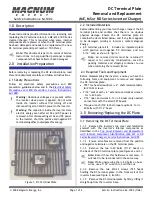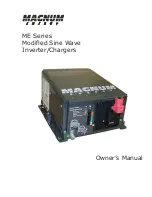
Silicon Image, Inc.
L
L
Scan Plus v2 User Manual
18
Deinterlacing is the process by which interlaced video is converted to progressively scanned
video. Progressive scanning paints all of the lines of a frame in one top to bottom pass. This is
used where transmission bandwidth is not an issue and where the highest quality image is
required. None of the interlaced side effects are present with progressive scanning.
Devices for performing deinterlacing are available for tens of dollars for low quality techniques
or for many thousands of dollars for very sophisticated techniques. The low cost techniques are
frequently used in progressively scanned TVs or projectors. High quality algorithms capable of
generating very high quality video are typically used in Line Doublers designed for high-end
home theater markets.
Some very inexpensive deinterlacers simply put fields together, creating an output frame
containing even lines from one point in time and odd lines from 1/60 second later. Any motion
between these two fields will result in the motion artifacts illustrated above.
To avoid these artifacts, some deinterlacers simply scale each of the fields up to the entire frame
size, interpolating between the existing lines. Unfortunately, this also significantly reduces the
vertical resolution of the image, resulting in softening of the picture with loss of image detail.
One method of avoiding this softening is to determine if there is any movement between fields by
comparing each of the fields with its counterpart in a previous frame. Further refinement of this
algorithm would be to apply the softening filter only to portions of the image that are in
movement. This is referred to as “motion adaptive” deinterlacing.
The most advanced and best quality Line Doublers are designed to also take advantage of the
“3:2 pulldown” technique that is used to transfer film to video. During this transfer, the first film
frame is captured onto 2 video fields (first even, then odd lines are scanned) then the second film
frame is captured onto 3 video fields (even, odd, even). As this is repeated, you can see that two
24Fps film frames (for a total of 1/12 of a second) are captured onto five 60fps video fields (for a
total of 1/12 of a second). A deinterlacer can examine a series of fields to detect this sequence and
thereby determine that the original, pre-video source of this sequence was film. It can then
reassemble the original progressive frames from the partial interlaced fields with no loss of
resolution or with no introduction of motion artifacts.
Silicon Image’s DVDO technology performs even more advanced techniques than those
described above. Performing over six billion arithmetic operations per second on the incoming
video stream, the iScan Plus v2 uses the data from four video fields during its processing. It can
determine not only which portions of the image are in motion, but also what type of movement
this is, and how best to generate a progressive image with maximum picture detail and minimum
motion artifacts.
The iScan Plus v2 also performs excellent 3:2 pulldown detection. In addition, it also recognizes
the 2:2 pulldown sequence used for converting computer graphics to video. For these film and
computer graphics sources, the iScan Plus v2 will reassemble the original progressive frames
with no unnecessary filtering of image detail.










































